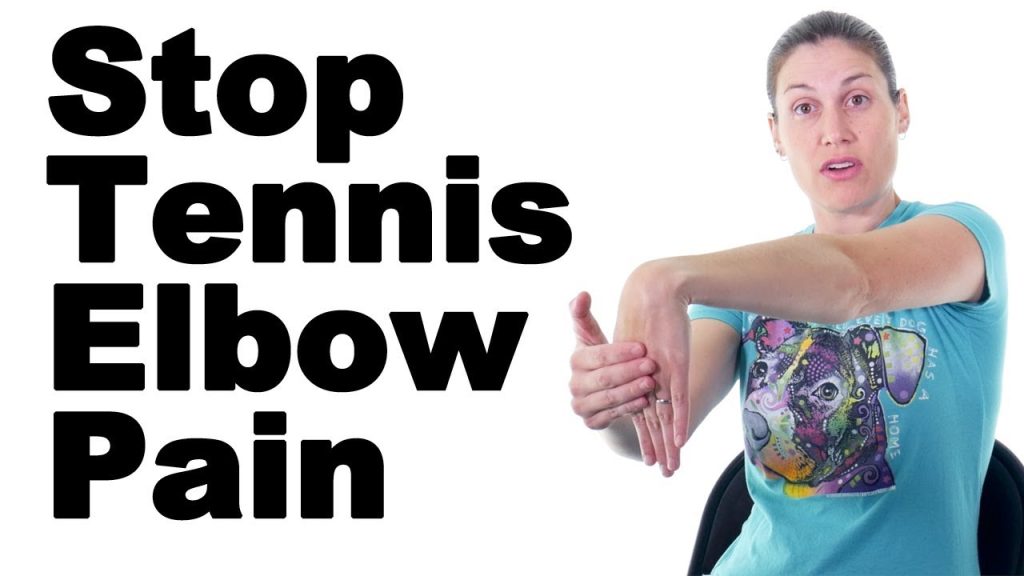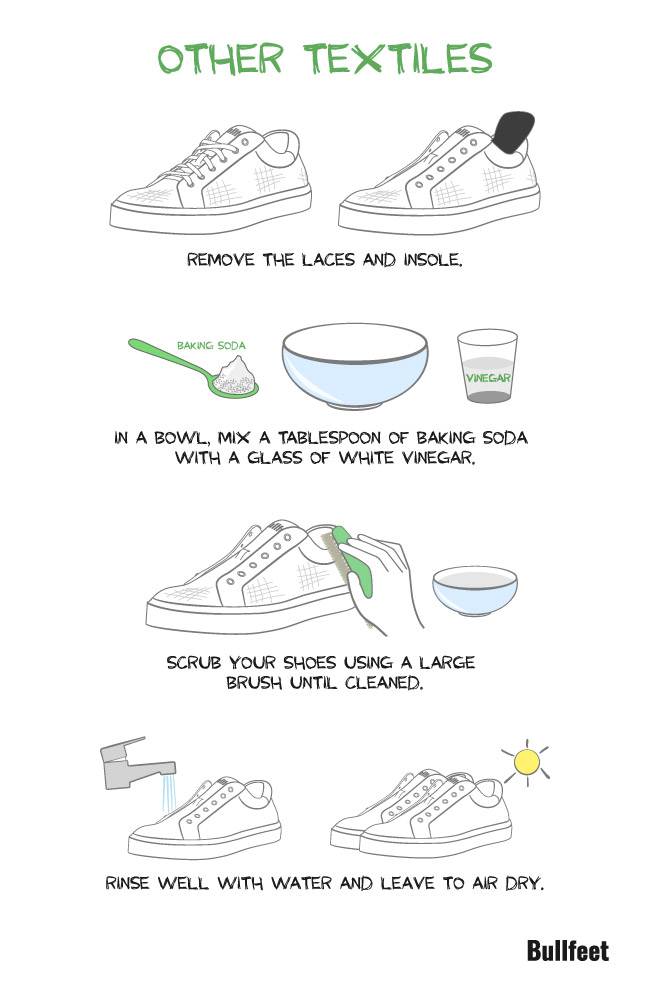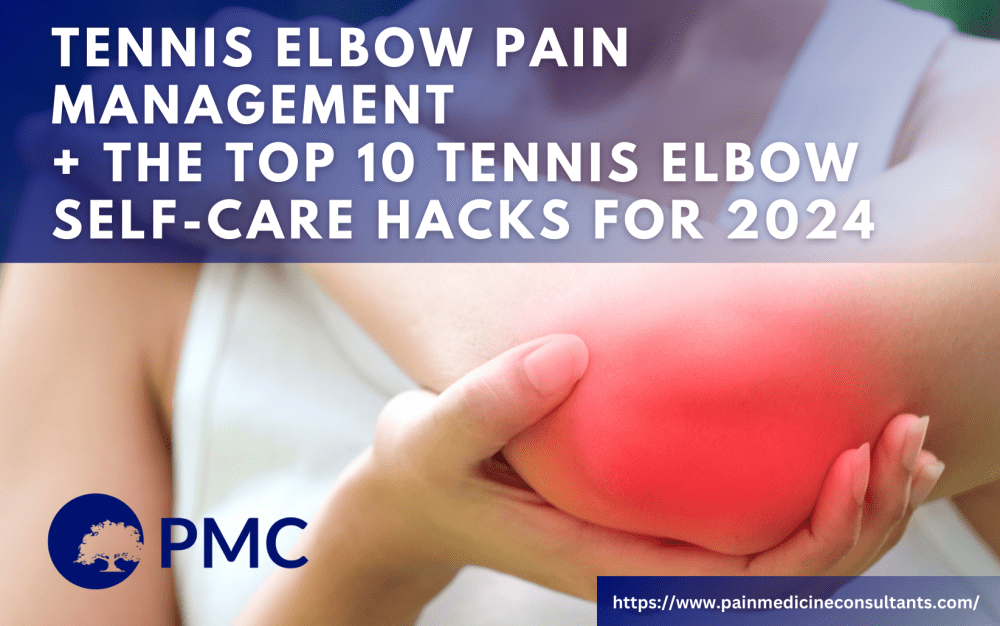Tennis elbow can be painful and frustrating. It affects daily activities and sports.
Tennis elbow, or lateral epicondylitis, causes pain around the elbow and forearm. This condition often stems from repetitive arm motions, common in sports like tennis, hence the name. The discomfort can impact your ability to grip or lift items. But there’s good news.
There are several effective ways to treat tennis elbow and relieve the pain. In this blog post, we will explore various treatment methods that can help you manage and overcome tennis elbow. From home remedies to medical treatments, we’ll cover everything you need to know to get back to your daily routine without discomfort.
What Is Tennis Elbow?
Tennis elbow is a condition that causes pain around the outside of the elbow. It is often linked to overuse of the arm and forearm muscles. These muscles are used for gripping, lifting, and repetitive wrist movements.
People who play tennis or other racquet sports are not the only ones affected. Many people who do not play sports can also develop tennis elbow. It is common among painters, plumbers, and carpenters.
Symptoms
The main symptom of tennis elbow is pain. This pain is usually felt on the outside of the elbow. It can also spread down the forearm and wrist. The pain may worsen when you try to lift or grip objects.
Other symptoms include weakness in the forearm. You might also experience stiffness in the elbow. Simple tasks like turning a door handle can become painful.
Causes
Tennis elbow is caused by overuse of the muscles and tendons in the forearm. Repetitive motions and stress on the elbow are the main triggers. These actions can cause tiny tears in the tendons that attach to the elbow.
Activities such as playing racquet sports can increase the risk. Jobs that require repetitive arm movements can also lead to tennis elbow. Even simple tasks like typing or gardening can cause strain over time.
Diagnosis
Diagnosing tennis elbow is crucial for effective treatment. It involves assessing symptoms and conducting specific tests. A thorough diagnosis ensures that the treatment plan is accurate and tailored to the patient’s needs.
Physical Examination
The first step in diagnosing tennis elbow is a physical examination. The doctor will ask about your symptoms and medical history. They will examine your arm and elbow for tenderness and swelling.
During the examination, the doctor may ask you to perform specific movements. These movements help identify pain points and assess the range of motion. The doctor might also check your grip strength. Weakness in this area can indicate tennis elbow.
Imaging Tests
If the physical examination is not conclusive, imaging tests might be necessary. Imaging tests provide a detailed view of the elbow’s internal structure. They help rule out other conditions that mimic tennis elbow symptoms.
Common imaging tests include:
- X-rays: These help rule out arthritis or bone issues.
- MRI: This provides a detailed image of soft tissues and helps detect tendon tears.
- Ultrasound: This test evaluates tendon health and identifies inflammation.
These tests ensure a precise diagnosis and guide effective treatment plans.
Home Remedies
Tennis elbow can be painful and limit your daily activities. Luckily, you can try some effective home remedies to ease the pain and speed up recovery. These simple methods can help you manage symptoms without needing professional treatment.
Rest And Ice
Rest is crucial for healing tennis elbow. Try to avoid activities that cause pain. Give your arm some time to heal. Resting helps reduce inflammation and prevents further damage.
Applying ice to the affected area can reduce pain and swelling. Wrap ice in a cloth and apply it to your elbow for 15-20 minutes. Do this several times a day. This can help numb the pain and reduce inflammation.
Over-the-counter Pain Relievers
Over-the-counter pain relievers can be helpful. Medications like ibuprofen and naproxen can reduce inflammation and pain. Follow the dosage instructions on the label. These medications can provide temporary relief while your elbow heals.
Avoid relying on pain relievers alone. Combine them with rest and ice for the best results. Always consult a doctor if you have any concerns about using these medications.
Physical Therapy
Physical therapy plays a crucial role in treating tennis elbow. It helps reduce pain and improve function. Through specific exercises, you can strengthen the affected area. This promotes healing and prevents recurrence.
Stretching Exercises
Stretching exercises are essential for tennis elbow recovery. They help improve flexibility and relieve muscle tension.
One effective stretch is the wrist extensor stretch. Hold your arm straight out with the palm facing down. Use your other hand to gently pull the fingers back towards your body. Hold for 15-30 seconds and repeat 3 times.
Another beneficial stretch is the wrist flexor stretch. Extend your arm with the palm facing up. Use your opposite hand to pull the fingers down and back. Hold this position for 15-30 seconds and repeat 3 times.
Strengthening Exercises
Strengthening exercises are vital for tennis elbow treatment. They build muscle strength and support the joint.
One effective exercise is the wrist curl. Sit with your forearm resting on a table, palm facing up. Hold a light weight and curl your wrist upwards. Slowly lower it back down. Do 3 sets of 10-15 repetitions.
The reverse wrist curl is another good exercise. Place your forearm on the table with the palm facing down. Hold a light weight and curl your wrist upwards. Lower it back slowly. Perform 3 sets of 10-15 repetitions.
Incorporate these exercises into your routine. They can significantly improve your condition. Consistency is key. Always consult a physical therapist for personalized advice.
Medical Treatments
Experiencing tennis elbow can be painful and frustrating. Fortunately, there are several medical treatments that can help alleviate the symptoms and promote healing. These treatments range from prescription medications to corticosteroid injections. Let’s explore each option in detail.
Prescription Medications
Doctors may prescribe nonsteroidal anti-inflammatory drugs (NSAIDs) to reduce pain and swelling. Common NSAIDs include ibuprofen and naproxen. These medications can provide relief and help you resume daily activities.
In some cases, a doctor might recommend stronger pain relievers or muscle relaxants. These are typically used for severe pain and should be taken under medical supervision. Always follow the dosage instructions provided by your healthcare provider.
Corticosteroid Injections
Corticosteroid injections are another option for treating tennis elbow. These injections deliver powerful anti-inflammatory medication directly to the affected area. This can provide rapid relief from pain and inflammation.
Doctors usually perform the injection in their office. The procedure involves using a fine needle to inject the steroid into the tendon. Relief from symptoms can last for several weeks or even months.
It’s important to discuss the potential risks and benefits with your doctor. While corticosteroid injections can be effective, they may not be suitable for everyone. Your doctor will help determine the best treatment plan for your specific condition.
| Treatment | Benefits | Considerations |
|---|---|---|
| NSAIDs | Reduces pain and swelling | Follow dosage instructions |
| Corticosteroid Injections | Quick relief from symptoms | Discuss risks with doctor |
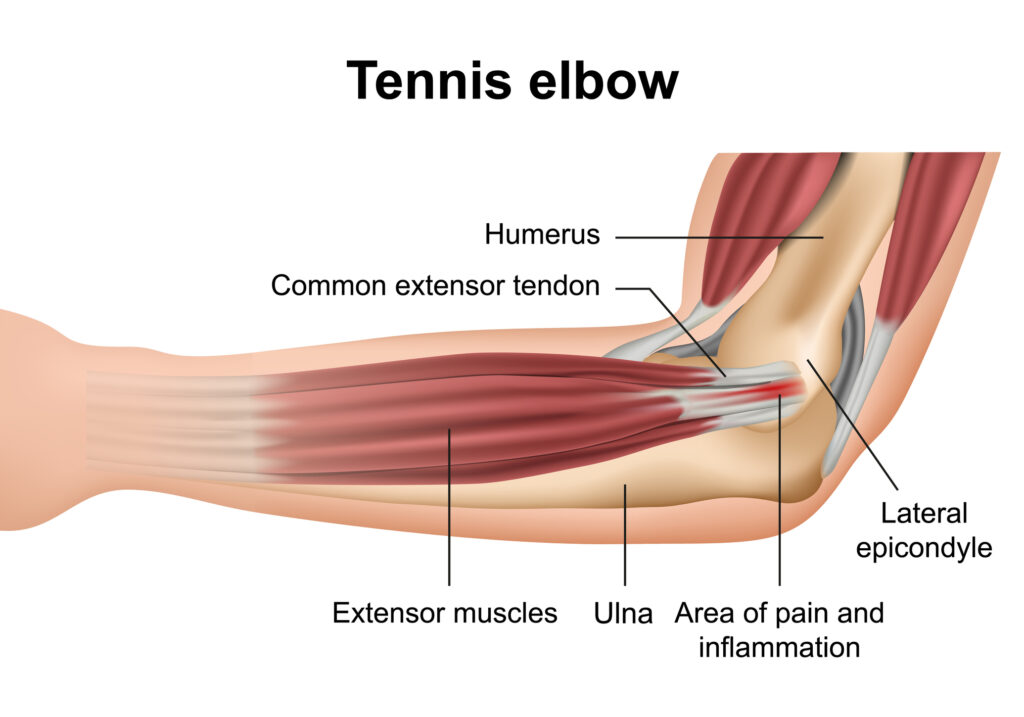
Credit: www.thecenteroregon.com
Alternative Therapies
Tennis elbow can cause immense discomfort and hinder daily activities. Traditional treatments like rest and medication might not always provide sufficient relief. This is where alternative therapies come into play. These therapies offer unique approaches to managing and alleviating pain. Here, we explore two popular alternative treatments: Acupuncture and Massage Therapy.
Acupuncture
Acupuncture is an ancient Chinese practice. It involves inserting thin needles into specific points on the body. This helps to stimulate nerves, muscles, and connective tissues. The process is believed to boost the body’s natural painkillers.
Studies suggest that acupuncture can reduce pain and inflammation associated with tennis elbow. Sessions typically last about 30 minutes. The number of sessions depends on the severity of the condition. Some may need only a few sessions, while others might require more.
Massage Therapy
Massage therapy is another effective alternative treatment for tennis elbow. It helps to improve blood flow and reduce muscle tension. There are different types of massages, such as deep tissue and sports massage. Each has its own benefits.
Deep tissue massage focuses on the deeper layers of muscles. It helps to break down scar tissue and reduce muscle stiffness. Sports massage, on the other hand, targets specific muscle groups and improves flexibility. Regular sessions can enhance recovery and prevent further injury.
Here is a table summarizing the benefits of each type of massage:
| Type of Massage | Benefits |
|---|---|
| Deep Tissue Massage | Reduces muscle stiffness, breaks down scar tissue |
| Sports Massage | Improves flexibility, targets specific muscle groups |
Both acupuncture and massage therapy offer natural ways to manage tennis elbow. They can be used alongside traditional treatments for better results. Consider these therapies to find relief from pain and improve your quality of life.
Prevention Tips
Tennis elbow can cause significant discomfort. Preventing it is easier than treating it. Follow these tips to keep your arms healthy and pain-free.
Proper Technique
Using the right technique is crucial. Hold the racket with a relaxed grip. Avoid gripping too tightly. Keep your wrist stable during the swing. Let your shoulder and elbow do most of the work. This reduces strain on your tendons.
Equipment Adjustments
Using the right equipment matters. Choose a racket with a suitable grip size. A larger grip can reduce strain. Also, select a racket with the right weight. Too heavy or too light can cause issues. Use strings with lower tension. They are more forgiving on your elbow.

Credit: www.miraclerehabclinic.com
When To See A Doctor
Experiencing tennis elbow can be painful and frustrating. While many cases improve with self-care, there are times when you should consult a doctor. Knowing when to seek medical help is important for a full recovery.
Persistent Pain
If you have persistent pain that lasts several weeks, it’s time to see a doctor. Pain that does not improve with rest or over-the-counter medications is a red flag. Your doctor may recommend treatments like physical therapy or injections.
Loss Of Function
Another sign to see a doctor is loss of function. This includes difficulty gripping objects or weakness in your forearm. If everyday tasks become challenging, seek medical advice. Early intervention can prevent further damage.
Monitor your symptoms closely. Recognizing these signs early can lead to better outcomes. Don’t ignore prolonged pain or reduced function. Your health is important.
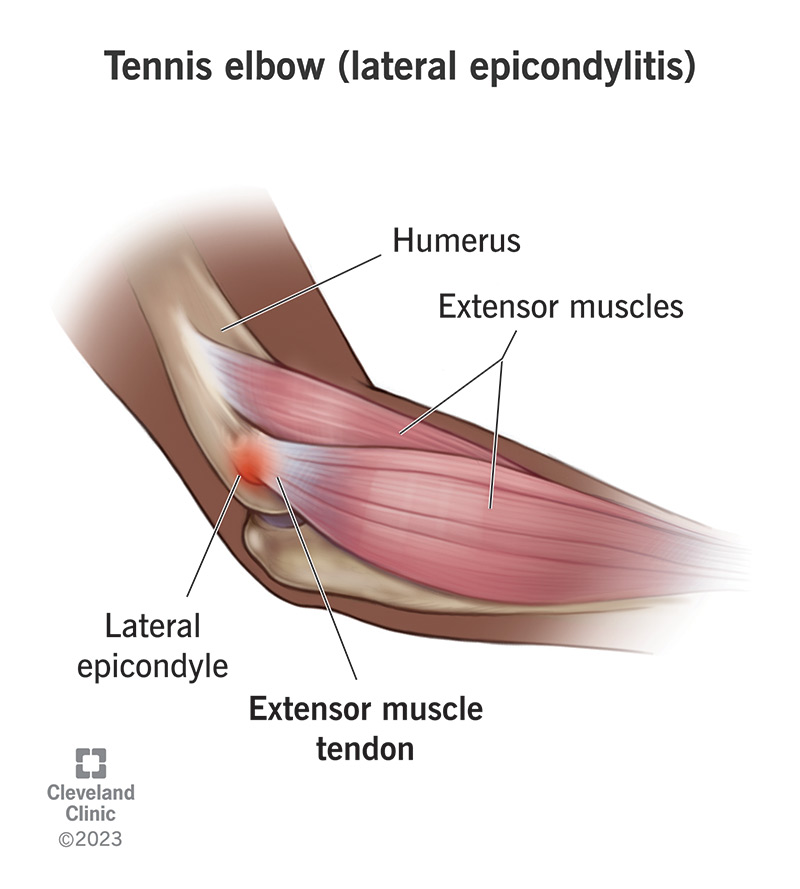
Credit: my.clevelandclinic.org
Frequently Asked Questions
What Are The Symptoms Of Tennis Elbow?
Symptoms of tennis elbow include pain and tenderness on the outer part of the elbow. You might also experience weakness in your wrist and trouble gripping objects.
How Is Tennis Elbow Diagnosed?
Tennis elbow is diagnosed through a physical exam by a doctor. They may check your elbow’s range of motion and ask about your symptoms.
What Treatments Are Available For Tennis Elbow?
Treatments for tennis elbow include rest, ice, and over-the-counter pain relievers. Physical therapy and exercises can help strengthen the muscles around the elbow.
Can Tennis Elbow Heal On Its Own?
Yes, tennis elbow can heal on its own with rest and proper care. Avoiding activities that strain the elbow will help recovery.
Conclusion
Treating tennis elbow requires patience and consistency. Start with rest and ice. Gradually add gentle stretching exercises. Over-the-counter pain relievers can help manage discomfort. Physical therapy can provide targeted exercises. Avoid activities that strain your elbow. Consider using a brace or support.
If pain persists, consult a doctor. They might suggest additional treatments like injections or surgery. Remember, recovery takes time. Stay committed to your treatment plan. Your elbow will thank you!

